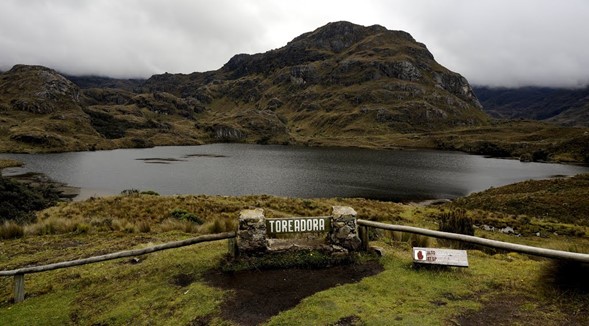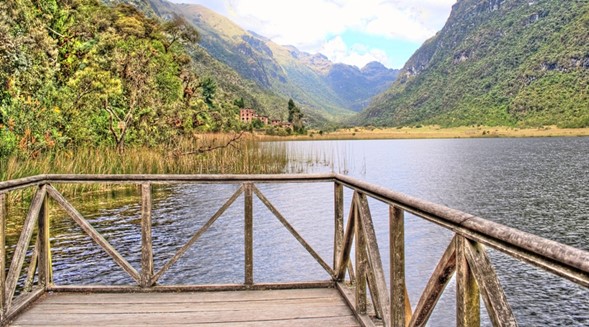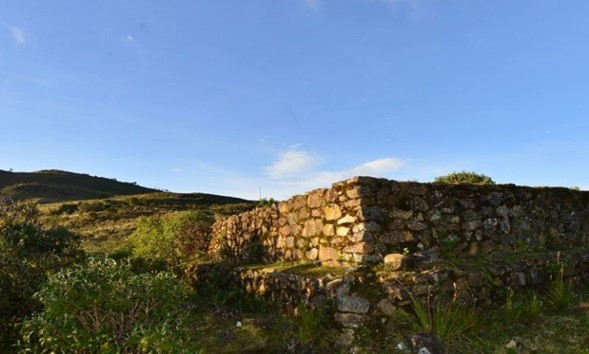
In a little corner of Ecuador, the Cajas National Park is located in the parishes of Chaucha, Sayausí, San Joaquín and Molleturo, belonging to the Cuenca Canton, Azuay Province. The park takes its name from the Quechua word “caxas” which means “cold.” And boy, is it cold because temperatures usually reach -2.16 degrees Celsius, you might imagine. However, there is also another version says that its name is due its type of geological formation, which forms “boxes” in which the lagoons are located.
Its main characteristic is the presence of more than 4000 small, medium and large bodies of water. In addition, due to the value of its lagoons and its biodiversity, it has received international recognition such as:
– Wetland of Importance.
– Area of international importance for the conservation of birds.
– Core area of biosphere reserve.
In the northern part of the park, the first lagoons to appear are Llaviucu and Toreadora. The Llaviucu Lagoon is a natural spectacle of calm waters and abundant forest with thousands of textures and colors. Perfect for bridwatchers, hikers or simply nature lovers.

Another reason to visit this park is La Toreador a lagoon, which allows visitors to reflect in its waters. Tourists who know the power of icy water, carefully venture to feel the cold and are able to be gratefull for the energy they receive.

From La Toreadora, a trail leads into the interior of the park to other lagoons. The first to appear are the lagoons of the Burines Valley, on a large plain that is ideal for camping. Continuing south, you reach Lagartococha and the Cave of the Dead, where it is believed that travelers and liquor smugglers died of cold. Southeast of Burines is Taitachungo or Mamamag.
Another attraction of great importance is the Qhapaq Ñan, this stretch that crosses the Cajas National Park once served as a connection between the highlands and the coast. The remaining section started in Tomebamba (today’s Cuenca) and culminated in the Molleturo walls, outside of the protected area. The Paredones are a group of pre-Hispanic buildings that indicate that there was an important Cañari and later Inca village or resting place.

Now you may be wondering, what activities can I practice in the park?
Among the standard allowed activities are: walking, hiking, trekking, climbing, camping, bird watching, photograph ing, researching, environmental education and sport fishing, which can only be practiced with a fishing rod and artificial bait.
In addition, for your comfort and enjoyment of the activities we recommend to:
Wear warm clothes, water poncho or waterproof jacket in case of rain and appropriate footwear such as ankle boots, all this will depend on your needs.
Finally, we will tell you how to get to the Park and what the entrance fee is.
From the city of Cuenca, it is necessary to take the Cuenca-Molleturo-Naranjal highway: This road crosses the park in the northern part and from there, you can access most of the lakes and tourist lagoons in the area. Another alternate third order route is located south of the park and is known as Soldados-Angas.
It is important to mention that this park is open to the public, so you can enter without any problem, but what you need to do before entering is to fill out the visitor registration form.
Its lagoons, its moors, the melodies caused by the wind hitting the grasslands, the intense cold, the icy water, the abundant flora and fauna and walking along the trails, make the Cajas National Park and its lagoons an ideal destination for vacation, without a doubt a magical place to visit.
Do you dare to visit it?
Leave a Comment